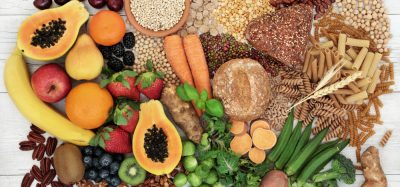Consumers willing to pay a premium on unhealthy foods they crave
- Like
- Digg
- Del
- Tumblr
- VKontakte
- Buffer
- Love This
- Odnoklassniki
- Meneame
- Blogger
- Amazon
- Yahoo Mail
- Gmail
- AOL
- Newsvine
- HackerNews
- Evernote
- MySpace
- Mail.ru
- Viadeo
- Line
- Comments
- Yummly
- SMS
- Viber
- Telegram
- Subscribe
- Skype
- Facebook Messenger
- Kakao
- LiveJournal
- Yammer
- Edgar
- Fintel
- Mix
- Instapaper
- Copy Link
Posted: 3 April 2018 | George Smith (New Food) | No comments yet
Neuroscientists have found that consumers are willing to pay disproportionately more for higher portion sizes of craved food items.


A team working at New York University (NYU) has thrown a light on how “cravings”, where one feels a desire for a specific food, can nudge consumers from a healthy path.
Published in the journal Proceedings of the National Academy of Sciences (PNAS), the team’s study consisted of a series of experiments in which subjects were asked to indicate how much they’d pay for certain snack foods after they developed a craving for one of them – significant differences in a desire for a specific food item (eg, a Snickers or granola bar) before and after exposure to the item constituted cravings.
The results showed that people were willing to pay more for the same exact snack food item if they were just exposed to it and asked to recall specific memories of consumption of this item, relative to before this exposure.
Notably, this occurred even if the study’s subjects were hungry before and after the exposure, suggesting that craving and hunger are partly distinct experiences.
“In other words, craving Snickers does not make you hungrier; it makes you desire Snickers specifically,” said Kenway Louie, an NYU research assistant professor and co-author of the study.
He added that there was also a spillover effect as it applied, to some degree, to similar food items that subjects were never exposed to (eg, other chocolate, nut, and caramel candy bars).
The researchers found stronger effects–bigger changes in the willingness to pay for an item the subjects craved–when the items were higher-calorie, higher-fat/sugar content foods, such as a chocolate bar or cheese puffs, relative to healthier options (eg, a granola bar).
Craving, which is pervasive in daily life, may nudge our choices in very specific ways that help us acquire those things that made us feel good in the past.
Finally, the experiments revealed a connection among craving, portion, and price. That is, people were willing to pay disproportionately more for higher portion sizes of the craved items.
“It appears that craving boosts or multiplies the economic value of the craved food,” said Anna Konova, postdoctoral researcher in NYU’s Center for Neural Science and the paper’s lead author.
“Our results indicate that even if people strive to eat healthier, craving could overshadow the importance of health by boosting the value of tempting, unhealthy foods relative to healthier options.
“Craving, which is pervasive in daily life, may nudge our choices in very specific ways that help us acquire those things that made us feel good in the past – even if those things may not be consistent with our current health goals.”
The study’s other co-author was Paul Glimcher, an NYU professor and director of NYU’s Institute for the Interdisciplinary Study of Decision Making.
There is growing interest across several sectors–marketing, psychology, economics, and medicine–in understanding how our psychological states and physiological needs affect our behaviour as consumers. Of particular concern is craving, which has long been recognized as a state of mind that contributes to addiction and, in recent years, to eating disorders and obesity.
Yet, the researchers note, little is known about the nature of craving and its impact on our choices and behaviour.
Related topics
Health & Nutrition, Obesity, Research & development, Sustainability, The consumer









